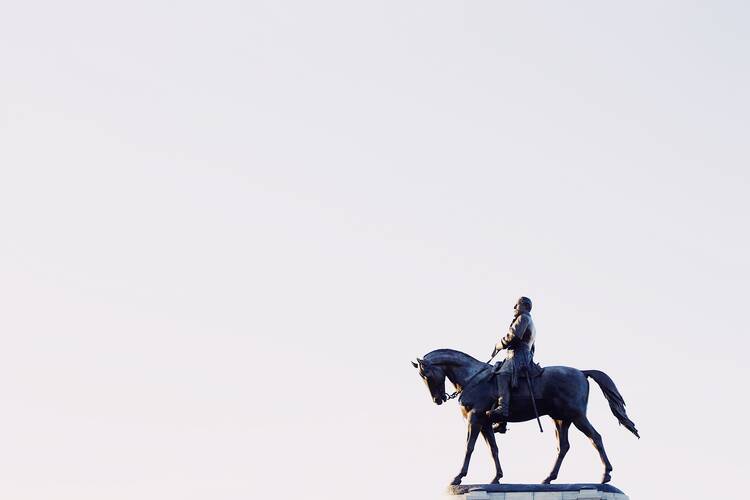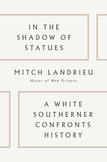New Orleans Mayor confronts racism in new memoir
The jazz legend Louis Armstrong was born and raised in New Orleans. He honed his trumpet skills in the brass band halls and riverboats of the Crescent City. But in his old age, he expressed no interest in returning to his hometown; he is interred in Flushing, Queens. Gen. Robert E. Lee was a lifelong son of Virginia, who possibly—maybe—spent one night in New Orleans as a young man. And yet, in 1884 a bronze statue of the commander of the Confederate Army was hoisted onto a large column at a traffic circle connecting the residential neighborhoods of uptown New Orleans to the bustling business district downtown.
Her legendary native son—a black man, an invisible man—would not come home, but New Orleans offered monument after monument to the Cult of the Lost Cause. This dichotomy is the heart of Mayor Mitch Landrieu’s meaningful reflections on race and memory in his book In the Shadow of Statues. In May 2018 Landrieu will step down as mayor after eight years steering New Orleans through the post-Katrina recovery. He oversaw substantial investments in public infrastructure and health care paired with unparalleled growth in the private sector. In the South, however, race tends to trump all.
Public art is an expression of public love. How can a black New Orleanian walk every day past a statue that expresses public love for General Lee and feel at home?
Landrieu confronts clearly the likelihood that history will not forget his decision to remove four Confederate statues from city property. Two statues memorialized Confederate generals (Lee and P. G. T. Beauregard, a Louisiana native), a third the president of the Confederacy, Jefferson Davis. The final and most egregious statue memorialized the attack by the White League, a paramilitary group, on city police and federal troops during Reconstruction.
Landrieu’s push to remove these statues is told through the lens of the city’s chronic inability to address race and poverty, clearly on view during Hurricane Katrina in August 2005. Landrieu’s Catholic faith and Jesuit education fortify his moral case that racial reconciliation requires cultural hospitality as well as social justice. Public art is an expression of public love. How can a black New Orleanian walk every day past a statue that expresses public love for General Lee and feel at home? It is fitting that Landrieu makes this cultural case against racism in a city so renowned for its culture—a culture created and guided by the music, cuisine and spirit of black people.
This article also appeared in print, under the headline “Race and Memory,” in the May 14, 2018, issue.










